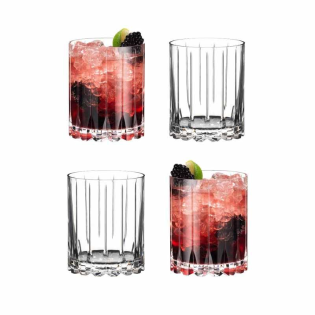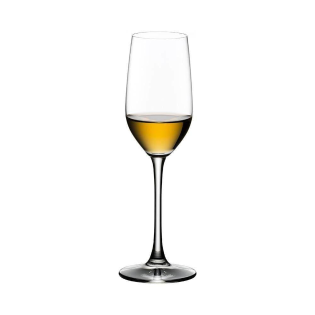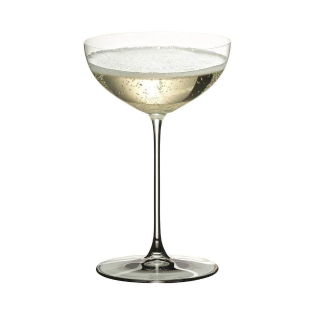 |
|
I was doing some analytical research in The Riedel Shop’s back office the other day (I know how to have fun!) and discovered something quite surprising.
Looking at 2023 so far, I found the “Usual Suspects” when it came to “Most Visited Pages” (the Homepage, the Riedel Question and Answers page and the Which Glass is This page) but the Top Selling Product, almost always the Riedel Vinum Bordeaux glass, was the Riedel Ouverture Beer glass.
Even more surprising was the Most Searched for Term, I was expecting “Bordeaux” or “Champagne” as usual, but, by some margin it was ….. “Tequila”.
This was so unexpected that I ran the analytics again….. twice! Sure enough, apart from June, where it dropped down to number 4, it was the most searched for term, every month since Christmas.
I didn’t realise that tequila was so popular (apart from students and stag nights!), so I started doing some research and discovered a happy coincidence.
This Monday, 24th July is World Tequila Day!
So, I've got my act together ahead of time (again!), and I'm here to share all things tequila with you, from its origins and production process to the different types and best ways to enjoy it.
So, sit back, relax, and get ready to dive into the world of tequila.
What is Tequila?
Tequila is a distilled alcoholic beverage made from the fermented juice of the blue agave plant, scientifically known as Agave tequilana Weber.
These succulent plants take several years to mature before they are ready for harvest. Once mature, the leaves are removed, and the heart of the agave, the piña, is extracted. The piñas are large and bulbous, resembling a giant pineapple, and can weigh up to 100 kilograms.
The tequila-making process involves several essential steps, each contributing to the final flavour profile of the spirit:
Harvesting: The mature agave plants are carefully harvested, and their leaves are cut away, leaving only the piña.
Cooking: The piñas are cooked in ovens or autoclaves to convert their starches into fermentable sugars. Traditional methods involve slow roasting the piñas in stone ovens, while modern techniques use steam-powered autoclaves for a faster process.
Milling: After cooking, the softened piñas are crushed to extract their sugary juice. Traditional methods use a stone wheel called a "tahona," while modern methods employ mechanical shredders.
Fermentation: The extracted juice, known as "aguamiel," is fermented in large vats. Natural fermentation occurs through the yeast present in the environment, but some distilleries use specific yeast strains for consistency.
Distillation: The fermented agave juice is then distilled at least twice in pot stills or column stills. The distillation process helps to concentrate the alcohol and refine the flavours.
Aging (Optional): While some tequilas are bottled immediately after distillation, others undergo aging in wooden barrels. The aging process can range from a few months to several years, and it imparts additional flavours and complexities to the spirit.
|
|
|
|
|
Types of Tequila
There are several types of tequila, each with its own characteristics and aging requirements:
Blanco (Silver): Also known as silver or white tequila, it is unaged or aged for a short period (usually up to two months) in stainless steel or neutral oak barrels. Blanco tequila showcases the pure agave flavours, making it ideal for cocktails like Margaritas or enjoying it neat or on the rocks.
Reposado: This type of tequila is aged for a minimum of two months and up to one year in oak barrels. The aging process imparts a smoother and more complex flavour, with hints of vanilla, oak, and spices. Reposado tequila strikes a great balance between the vibrant agave flavours and the influence of wood.
Añejo: Aged for a minimum of one year and up to three years in oak barrels, añejo tequila is known for its rich, smooth, and sophisticated flavour profile. It exhibits pronounced notes of caramel, chocolate, and toasted oak, and is often enjoyed neat or as a sipping tequila.
Extra Añejo: This category is a relatively recent addition to tequila classifications, requiring a minimum aging period of three years. Extra añejo tequila boasts a deep amber colour and complex flavours with characteristics similar to aged spirits like whiskey or brandy.
|
|
|
|
 |
|
|
Riedel Mixing Sets Tequila Glasses (Set 4)
|
|
|
RRP £60.00
|
|
|
£47.95
|
|
|
|
|
|
 |
|
|
Riedel Rocks and Highball Glasses (Set 8)
|
|
|
RRP £97.50
|
|
|
£77.95
|
|
|
|
|
|
 |
|
|
Riedel Double Rocks Glasses (Set 4)
|
|
|
RRP £50.00
|
|
|
£37.95
|
|
|
|
|
|
|
|
|
|
How to Enjoy Tequila
Tequila is a versatile spirit that can be enjoyed in various ways. Here are some popular ways to savour tequila:
Sipping: Premium tequilas, especially reposado and añejo, are delightful when sipped slowly, allowing you to savour the intricate flavours and aromas.
Neat or On the Rocks: Blanco and reposado tequilas can be enjoyed neat (straight) or on the rocks (over ice) to appreciate their pure agave essence.
Margarita: The classic Margarita is a beloved tequila cocktail made with tequila, triple sec, lime juice, and simple syrup, served in a salt-rimmed glass.
Paloma: A refreshing and popular Mexican cocktail, the Paloma consists of tequila, grapefruit soda (or fresh grapefruit juice), and a splash of lime juice.
Tequila Sunrise: A visually stunning cocktail, the Tequila Sunrise combines tequila, orange juice, and grenadine, creating a vibrant layered effect in the glass.
The Origins of Tequila
Like the origins of whisky, the history of tequila's creation is steeped in mystery and folklore. The blue agave plant has been used for centuries by indigenous tribes in Mexico for various purposes, including food, clothing, and beverages. According to legend, the Aztecs worshipped Mayahuel, the goddess of fertility and the agave plant. They believed that agave had divine powers and used it for various rituals and ceremonies. Over time, the indigenous people discovered how to ferment the agave juice, giving rise to the early versions of tequila.
The credit for the development of tequila as we know it today is often attributed to Don Pedro Sánchez de Tagle, the Marquis of Altamira, who is said to have distilled agave in the late 16th century. The distillation process allowed for the concentrated alcoholic spirit we now recognize as tequila.
Tequila's popularity and production expanded in the 18th century, and by the early 19th century, the town of Tequila in Jalisco, Mexico, became a central hub for tequila production.
Today, tequila is a symbol of Mexican culture and heritage, recognized and appreciated worldwide and has legal protections like Champagne or Parmigiano-Reggiano cheese. To bear the tequila name, the spirit must come from certain regions of Mexico and follow strict production norms.
|
|
|
|
 |
|
|
Riedel Drink Specific Glassware Fizz (Pair)
|
|
|
RRP £32.50
|
|
|
£25.95
|
|
|
|
|
|
 |
|
|
Riedel Ouverture Tequila Glasses (Pair)
|
|
|
RRP £30.00
|
|
|
£23.95
|
|
|
|
|
|
 |
|
|
Riedel Drink Glassware Highball (Pair)
|
|
|
RRP £32.50
|
|
|
£25.95
|
|
|
|
|
|
|
|
|
|
Tequila: A Spirit of Legends
Much like whisky, tequila has its share of myths and misconceptions:
The Worm: Contrary to popular belief, not all tequilas have a worm in the bottle. The practice of adding a worm (actually the larva of a moth) originated with some mezcals, a different type of agave-based spirit.
Tequila is Made from Cactus: Tequila is made from the blue agave plant, which belongs to the agave family, not the cactus family. Agave is a succulent.
Tequila is Only for Shots: While tequila shots are popular, particularly with younger drinkers, tequila is a sophisticated spirit that can be savoured like fine whiskey or enjoyed in a variety of cocktails.
Tequila Causes Hangovers: Like any alcoholic beverage, excessive consumption of tequila can lead to hangovers. However, high-quality tequilas, especially those made from 100% blue agave, are less likely to cause severe hangovers due to their purity and lack of added sugars.
Tequila Heroes
Tequila has its share of legendary figures who contributed to its history and popularity:
Don Julio González: Known as the Father of Tequila, Don Julio González was born in 1925 in the remote highlands of Jalisco, Mexico. When his father died, leaving behind a wife and seven children, Julio was forced to become the sole breadwinner of his household at just 15 years old.
He took a job as a farmhand, but after realising that a meagre nine pesos a week couldn’t support a family of eight, he embarked upon his first independent tequila venture. An entrepreneur from the get-go, the teenage Gonzalez would journey across Jalisco on horseback, selling tequila from small wooden barrels. Instead of nine pesos a week, he was soon earning nine pesos a day.
In 1942, with nothing but his own passion for the endeavour, Julio approached the wealthiest merchant in the Mexican town of Atotonilco and asked him for a loan to open his own distillery.
Seeing exceptional drive and confidence in the young man, the merchant granted him 20,000 pesos and Julio got to work. At just 17 years of age, he purchased his first distillery, later naming it ‘La Primavera’ (‘Spring’).
This would be the first step on his journey to creating the iconic Don Julio brand, the world’s first luxury premium tequila. It is still made in Atotonilco and is the most valuable tequila brand in the world.
Margarita Sames: Often credited with creating the Margarita cocktail, Texan socialite Margarita Sames hosted a cocktail party in 1948 at her Acapulco vacation home and served a drink made from tequila, lime juice, and Cointreau. The guests loved it, and the Margarita became a global sensation.
The Cuervo Family: In 1758, Don José Antonio de Cuervo was issued a land grant by King Ferdinand VI of Spain in the town of Tequila, Jalisco. Here his family founded the Taberna de Cuervo, the farm where they would cultivate and harvest the blue agave plant.
The first Vino Mezcal de Tequila de Jose Cuervo was made in 1795, after Don José's son José María Guadalupe de Cuervo was granted a permit from King Carlos IV of Spain to produce tequila commercially, following a time of prohibition under King Carlos III. This was the birth of the tequila industry.
By 1880, the Cuervo family had begun individually bottling tequila for commercial distribution. Cuervo was the first distiller to bottle tequila, at a time when other distillers were still using barrels.
Jose Cuervo is the world’s best selling tequila brand, with around 20% of the market share.
|
|
|
|
 |
|
|
Riedel Veritas Coupe
Glasses
(Pair)
|
|
|
RRP £62.50
|
|
|
£49.95
|
|
|
|
|
|
 |
|
|
Riedel Drink Specific Glassware Nick & Nora Glasses (Pair)
|
|
|
RRP £32.50
|
|
|
£25.95
|
|
|
|
|
|
 |
|
|
Riedel Vinum Martini
Glasses
(Pair)
|
|
|
RRP £45.00
|
|
|
£39.50
|
|
|
|
|
|
|
|
|
|
What does the future hold?
Preliminary 2022 data indicates that tequila has surpassed American whiskey by value to become the second most valuable spirits subcategory in the U.S. And according to IWSR Drinks Market Analysis, tequila is set to overtake vodka in 2023 to become the industry leader by value.
Why?
You could call it the “George Clooney effect.”
Ever since the actor launched Casamigos Tequila with Mike Meldman and Rande Gerber in 2013, more celebs than ever have rolled out their own branded bottles.
From Rita Ora and Nick Jonas to Michael Jordan and Dwayne “The Rock” Johnson it seems any celebrity worth their salt (sorry, couldn't resist!) is in the tequila business. The allure may also be helped by the fact that Casamigos was sold, in 2017, for $1 billion!
Tequila is more than just a spirit; it is a symbol of Mexican heritage and craftsmanship. Its history is rich and steeped in tradition, and its production process is an art form in itself.
Whether you enjoy it in a cocktail, neat, or on the rocks, raising a glass of tequila is a celebration of the agave plant and the culture that surrounds it.
So, on World Tequila Day, grab a bottle of your favourite tequila, savour its flavours, and toast to the spirit that has captivated the world for centuries.
Salud!
|
|
|
|
|
|
|